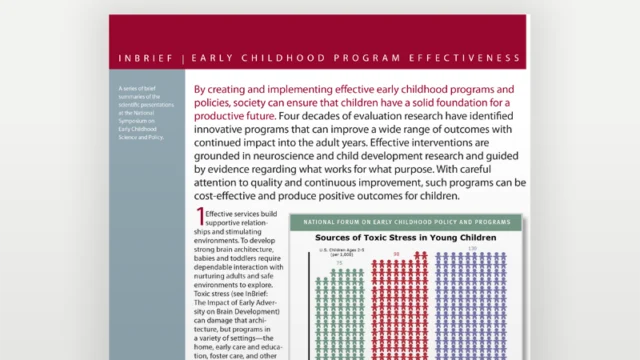InBrief: Early Childhood Program Effectiveness

By creating and implementing effective early childhood programs and policies, society can ensure that children have a solid foundation for a productive future. Four decades of evaluation research have identified programs that can improve a wide range of outcomes with continued impact into the adult years. Effective interventions are grounded in neuroscience and child development research and guided by evidence regarding what works for what purpose. With careful attention to quality and continuous improvement, such programs can be cost-effective and produce positive outcomes for children.